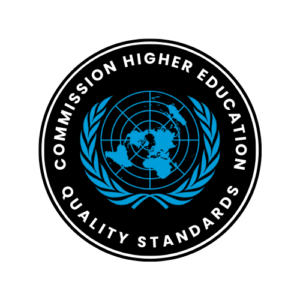About the CHEQS
The CHEQS Commission and Quality Standards Board has its beginnings in the leadership institute of 1996 which focused on certification standards and business principles. The focus of the CHEQS is operating as a licensing and accreditation body which recognizes top educational programs globally. The CHEQS was also a charter signatory member of the US Department of Education recognized QG Quality Group MOA Standards Agreements.
We can recognize your qualifying educational body , or we can recognize you as a member of the CHEQS commission if you apply as an individual member.
The CHEQS uses ISO 29990, ISO 21001, ISO 29993, and ISO 9001 Standards globally as a Certifying Standard to recognize training and educational bodies. CHEQS Standards Commission is an accreditation body that has been approved for ISO 29993 non formal training certification and conveys this accreditation over to partners who offer germane and relevant courses with topic coverage to satisfy the certification requirements.
The CHEQS Accredits programs worldwide to use it’s proprietary certification curriculums so that learners may specialize in a subject using the most relevant TCO Terminal Course Objectives.
When we approve a program, that program becomes an Accredited Professional Development Body and joint education and certification program.
Quality standards in the professional skills certification world are essential to ensure that certifications are reputable, reliable, and recognized as credible indicators of an individual’s competence in a particular area. While the specific quality standards may vary depending on the industry and certifying body, here are the CHEQS quality standards observed in the professional skills certification world:
- Accreditation: Certification programs should be accredited by recognized accrediting bodies or governmental agencies to verify their adherence to established quality standards.
- Validity: The certification exam and assessment process should accurately measure the skills and knowledge relevant to the profession or skill being certified.
- Reliability: The certification exam should produce consistent results for test-takers who possess the same level of competence.
- Fairness: The certification process should be fair and unbiased, ensuring equal opportunities for all candidates regardless of background or demographics.
- Clear Learning Objectives: Clearly defined learning objectives and competencies that outline the skills and knowledge candidates are expected to demonstrate.
- Job Task Analysis: Regular job task analyses to ensure the certification aligns with the current demands and requirements of the profession.
- Assessment Development: Rigorous and standardized procedures for developing certification exams and assessment tools.
- Standard Setting: A transparent and valid process for setting passing scores that represent the minimum level of competence required.
- Security Measures: Strict security measures to protect the integrity of the exam and prevent cheating.
- Candidate Eligibility: Clearly defined eligibility criteria to determine if candidates possess the necessary qualifications and experience.
- Recertification Requirements: A process for recertification or maintenance of certification to ensure professionals stay current in their skills and knowledge.
- Continued Professional Development: Encouraging and providing resources for ongoing professional development to support certified professionals’ growth.
- Ethics and Code of Conduct: A code of ethics that outlines the expected professional conduct for certified individuals.
- Governance and Oversight: Effective governance and oversight to ensure compliance with quality standards and ethical practices.
- Transparency: Openness and transparency in the certification process, including the disclosure of policies and procedures to candidates.
- Appeals and Grievances: A fair and accessible process for candidates to appeal certification decisions or address grievances.
- Public Awareness: Promoting public awareness and understanding of the certification’s value and significance.
- Continuous Improvement: Regular evaluation and improvement of the certification program based on feedback and industry developments.
- Industry Recognition: Collaboration with relevant industry stakeholders to gain recognition and acceptance of the certification.
- International Alignment: Ensuring the certification aligns with international standards, where applicable, to facilitate global recognition.
Some Functions of Accreditation and Quality Standards
- Verifying that an institution or program meets established standards;
- Assisting prospective students in identifying acceptable institutions;
- Assisting institutions in determining the acceptability of transfer credits;
- Helping to identify institutions and programs for the investment of public and private funds;
- Protecting an institution against harmful internal and external pressure;
- Creating goals for self-improvement of weaker programs and stimulating a general raising of standards among educational institutions;
- Involving the faculty and staff comprehensively in institutional evaluation and planning;
- Establishing criteria for professional certification and licensure and for upgrading courses offering such preparation; and
- Providing one of several considerations used as a basis for determining eligibility for Federal assistance.
